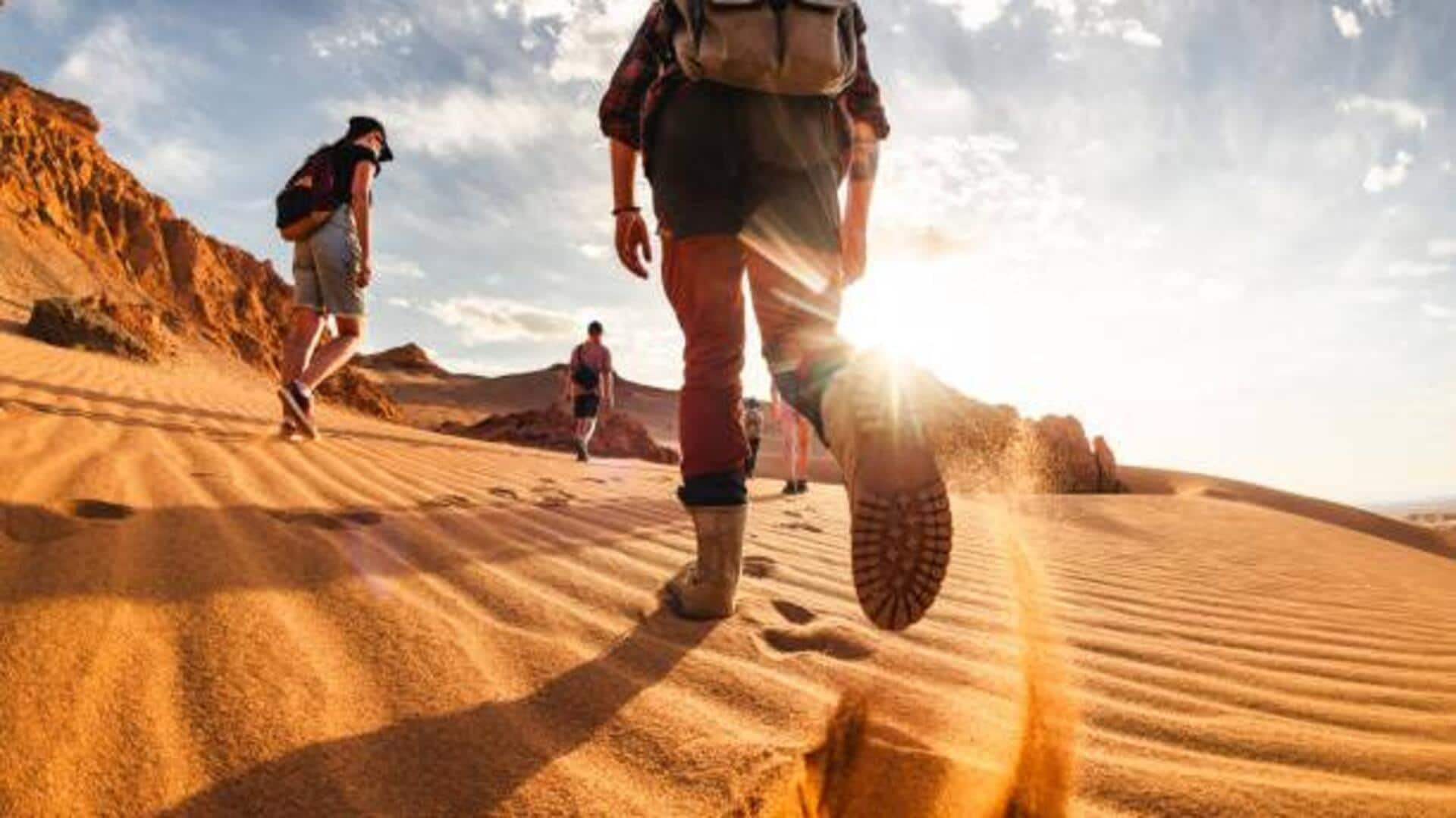
Why desert hiking is a must-try adventure
What's the story
Exploring sunlit deserts offers a unique opportunity to experience landscapes that resemble the moon's surface. These vast, arid regions transform under the sun's rays, revealing a stark beauty that captivates adventurers and nature enthusiasts alike. The interplay of light and shadow creates an otherworldly experience, making these hikes both challenging and rewarding. Here's all about desert hiking and what makes these landscapes so compelling.
Terrain insights
Understanding desert terrain
Desert terrains are characterized by their dry conditions and sparse vegetation. The ground is often sandy or rocky, with dunes or flat expanses stretching for miles. Understanding this terrain is crucial for hikers as it affects navigation and endurance levels. The lack of water sources means preparation is key to ensure safety during hikes. Familiarity with the terrain helps in planning routes that maximize both safety and enjoyment.
Timing tips
Importance of timing your hike
Timing is key when it comes to hiking in deserts because of extreme temperature fluctuations from day to night. Hiking early morning or late afternoon is advisable to avoid scorching midday heat, which can get dangerously hot. Planning your hike around sunrise or sunset not just makes it cooler, but you'll also get breathtaking views as the terrain changes colors in the light.
Gear essentials
Essential gear for desert hiking
Proper gear is crucial for a successful desert hike. Lightweight clothing that covers skin from harsh sunlight is advisable as well as sturdy footwear appropriate for uneven terrain. A wide-brimmed hat, sunglasses, and sunscreen protect against UV exposure while carrying enough water supplies prevents dehydration—a common risk in desert environments where temperatures can soar above 40 degrees Celsius (104 degrees Fahrenheit).
Navigation strategies
Navigating without landmarks
Deserts are devoid of prominent landmarks, making it difficult to navigate, even for the most experienced trekkers. Carrying GPS devices with traditional maps ensures you're on the right path, while compasses help you remain on the right track when your electronics malfunction due to extreme weather conditions or low battery. Knowing how to read natural signs such as wind patterns on sand can help you stay oriented throughout your journey.
Safety measures
Staying safe under harsh conditions
Safety should always come first during any outdoor adventure, especially within harsh environments like deserts. Risks include heat exhaustion, dehydration, snake encounters, etc. Carrying first-aid kits, knowing basic survival skills such as building temporary shelters, finding shade spots, and quickly reacting appropriately if lost, significantly enhances overall safety preparedness.